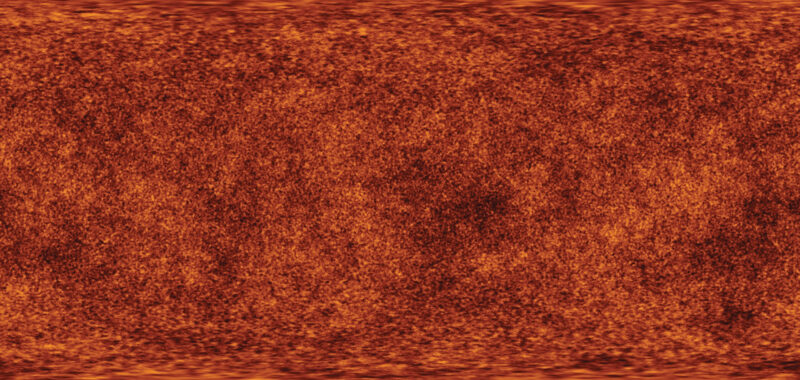Excerpted from The Universe in 100 Colors: Weird and Wondrous Colors from Science and Nature by Tyler Thrasher and Terry Mudge. September 24, 2024, Sasquatch Books. Published with permission.
Feast your eyes upon the first color—not the first one in this book of course, but the first color in the universe. This bright-hot glowing peachy orange didn’t exist until approximately 380,000 years after the birth of the universe, when it finally cooled to a comfortable 3000 Kelvin or 2727 degrees Celsius (4938 degrees Fahrenheit): cosmic tank top weather. Prior to this period, the plasma makeup of the infant universe was too dense for light to travel. That would require low enough temperatures for atoms to form before the universe could hope to produce anything that could be defined as a color.
Nowadays the average temperature of the universe sits just below a chilly 3 Kelvin, a steep decline from the primordial 3000 Kelvin. This was deduced from studies of the cosmic background radiation, a blueprint of the universe left behind from the big bang. The early universe had an evenly distributed temperature with wavelengths attributed to a blackbody: an object or thing that exhibits color based only on its temperature rather than the material it is made of. If humans had been able to observe this color as it permeated the space-time of the early universe, it would be similar to a warm orange campfire. That bright orange would slowly darken and fade until the universe was roughly 100 million years old, when the first stars were born, resulting in the universe we recognize today.

If you’d like to read more from The Universe in 100 Colors: Weird and Wondrous Colors from Science and Nature, check out Animals only see in black and white and 5 other color myths.

